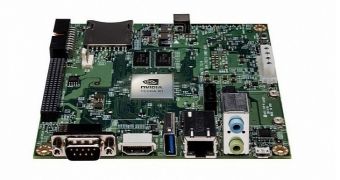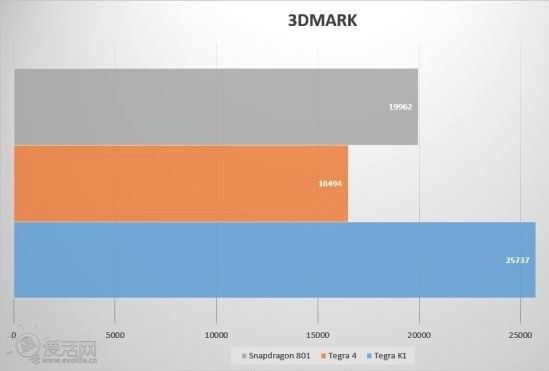It wasn't long ago that NVIDIA revealed its Tegra K1 developer kit, but already there are people testing it against the main competition, specifically the Snapdragon 801 processor from Qualcomm.
According to a benchmark posted on evolife.cn, Tegra K1 beats Qualcomm's chip by far, and the Tegra 4 by even more.
The knee-jerk reaction would be to gush over the new chip module from Santa Clara, but there are some things we have to take into account first.
For one, we have no idea if the tests were all that fair, because Tegra K1 can come in x32 and x64 versions and we don't know which one was used here.
Also, we don't know how NVIDIA's device works in tablets, while Qualcomm's Snapdragon 801 has had the past five months to show its stuff.
Besides, real-world performance is not the same thing as benchmarks. The Tegra 3, for example, beat pretty much everything in benchmarks but was found wanting when placed in actual devices.
It's why Tegra 3-based tablets went from insanely popular to lackluster in terms of the “awe factor,” or lack thereof.
Then again, the Tegra K1 does have a lot of tough hardware to show off, like four Cortex-A15 cores, and a fifth one, low power, that takes over when nothing too demanding is being run on the tablet or smartphone (more like superphone) it powers. This is the heart of the Tegra 4-PLUS-1 architecture and saves energy.
The graphics is handled by a Kepler graphics processing unit, of 192 CUDA cores, making it a match for the GeForce GTX 550.
Well, NVIDIA did say it planned to give tablets console-level graphics, so it has. It's the design wins that are still up in the air. There's 2 GB RAM, USB 2.0, Gigabit Ethernet, SATA, and Realtek audio in the Tegra K1 module too.
In comparison, the Qualcomm Snapdragon 801 is pretty small, using a Krait 400 CPU and Adreno 330 graphics processing unit. It has Cat4 LTE support, hardware for dual-SIM dual-active (DSDA) mode, support for high resolutions (2560 x 2048 + 1080p or 4K external displays, via H.265 video codec.), and sensors/ICs for a camera and GPS.
In a way, it's pretty odd that a chip made for smartphones would be pitted directly against a significantly larger module intended for tablets and even small servers. Then again, stranger things have happened, and we suppose NVIDIA does need something to buoy interest for the K1, since we won't see design wins until later this year.

 14 DAY TRIAL //
14 DAY TRIAL // 

